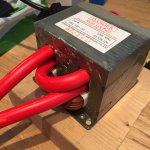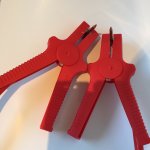mistercrash
10 kW
If you go see my post on the previous page, https://endless-sphere.com/forums/viewtopic.php?f=14&t=68005&start=325#p1165636
I think the way I demonstrate how I would make large batteries can apply to smaller ones. By having one very short Nickel strip on each cell that connects to a sizable sheet of Copper, like 2,5mm thick, the Nickel strips being so short might stay cooler and the Copper sheet would absorb a lot of heat.
I think the way I demonstrate how I would make large batteries can apply to smaller ones. By having one very short Nickel strip on each cell that connects to a sizable sheet of Copper, like 2,5mm thick, the Nickel strips being so short might stay cooler and the Copper sheet would absorb a lot of heat.




